DjangoBooks.com
Welcome to our Community!
Categories
- 20K All Categories
- 1.1K General
- 476 Welcome
- 59 Archtop Eddy's Corner
- 146 CD, DVD, and Concert Reviews
- 384 FAQ
- 26 Gypsy Jazz Italia
- 26 Photos
- 202 Gypsy Picking
- 21 Unaccompanied Django
- 15 Pearl Django Play-Along Vol.1
- 17 Gypsy Fire
- 45 Gypsy Rhythm
- 1.4K Gypsy Jazz University - Get Educated
- 130 Gypsy Jazz 101
- 224 Repertoire
- 218 History
- 707 Technique
- 51 Licks and Patterns
- 6 Daniel Givone Manouche Guitare Method Users Group
- 20 Eddie Lang Club
- 1.3K Gypsy Jazz Gear
- 801 Guitars, Strings, Picks, Amps, Pickups and Other Accessories
- 457 Classifieds
- 49 Recording
- 62 Other Instruments
- 18 Violin
- 5 Mandolin
- 22 Accordion
- 7 Bass
- 10 Woodwinds
- 346 Gypsy Jazz Events
- 142 North America
- 109 Europe
- 95 International
In this Discussion
A Rare Find With a Selmer Connection (or now it seems, maybe not).
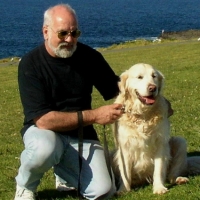 ChrisMartin
Shellharbour NSW Australia✭✭ Petrarca, Hofner, Burns, Kremona Zornitsa, Fender, Epiphone
ChrisMartin
Shellharbour NSW Australia✭✭ Petrarca, Hofner, Burns, Kremona Zornitsa, Fender, Epiphone
Not quite a ‘Django’ style guitar but possibly of interest here anyway, I recently acquired a metal bodied resonator guitar made in France for, and sold by, Paul Beuscher. Then again, as Oscar Aléman and Serge Camps both played resonators maybe it is not too far out.
The traditional National resonators had only a limited appeal in France and even briefly popular Hawaiian type lap steel guitarists seem to have often used wooden bodied instruments. However, the French had considerable colonial inks to various African countries and Beuscher also appears to have had connections to sell instruments there. Beuscher saw the metal bodied guitars as a potential seller in African countries presumably as traditional guitars made of wood did not survive long due to the extreme climate.
Thus the Beuscher company launched a metal bodied resonator guitar in 1953 which stayed in production until 1971ish with most of them going to Africa; sources claim varying production totals between 400 and 800.
Now the interesting bit !
As we all know Selmer had stopped making guitars by 1953, getting out of the market and selling the remaining stock of parts to another retailer strangely named Pierre Beuscher who was no relation to the aforementioned Paul Beuscher (but that is another story for another time) and it was this second Beuscher who asked Jacques Favino to make some guitars using the ex-Selmer leftovers.
So, now it seems the new Paul Beuscher resonators had their metal bodies made by……….........yep, Selmer !
The necks were outsourced initially to Paris-based Spanish emigré David Enesa and Théo Ruiz.
Beuscher also applied a decal to the headstock with the brand SML and these also sometimes named in the catalogues as ‘Vibraphonic’ guitars.
From what I have found through contacts in France there are few survivors known.
This one has some minor damages to be restored and the nickel plating shows wear but it is complete and structurally sound. The back of the headstock has the impressed mark of David Enesa who died in 1957, so even allowing for a possible delay using up existing stocks this dates it as one of the early ones. Some had Bilardi tuners with the normal SB markings and some were fitted with similar tuners but with plain (unmarked) covers as is this example; I was told by one French source these were also made by Selmer; I am still investigating that but as one has a broken shaft needing repair I will take detailed photos once it is dismantled.
From what I have found through contacts in France there are few survivors known.
Here is a link to a French website;
and I have already been in contact with Marc Sabatier to keep him informed of progress.
If anyone has any more info on these I would be pleased to hear it.
I will take some better photos showing more detail this week.
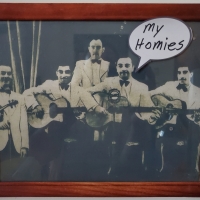

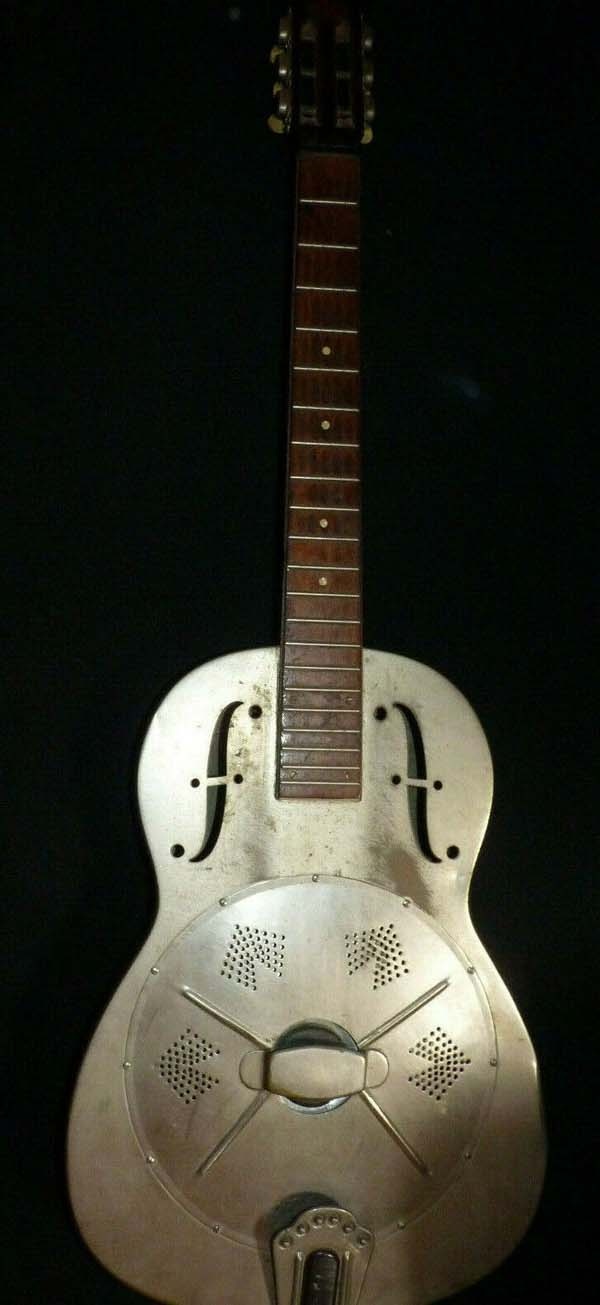
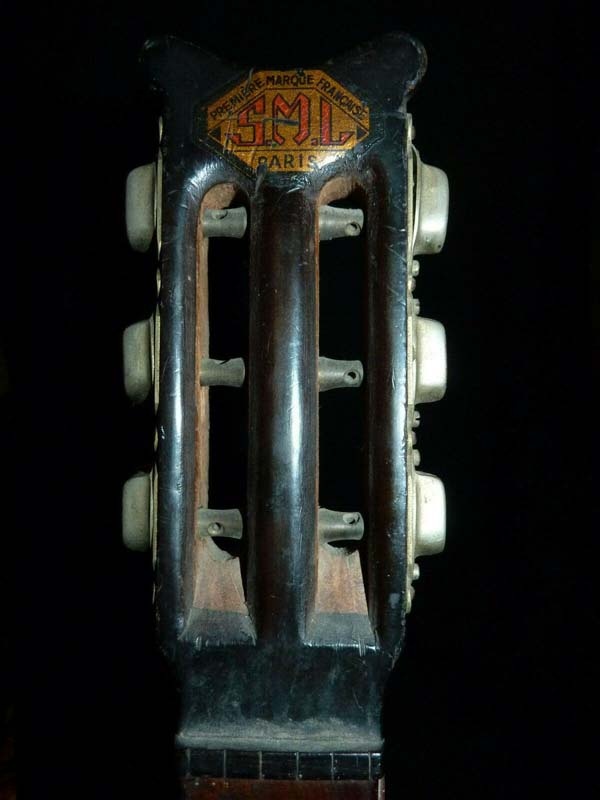


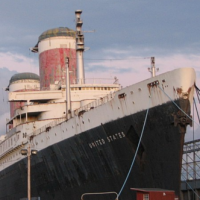
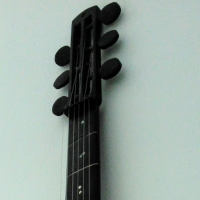









Comments
Fascinating, thanks for sharing. I guess the original Macc was a kind of resonator. The closest I will ever get to a Selmer is my ‘62 Hofner with a ‘distributed by Selmer’ headstock
Nothng wrong with a Hofner. I have been through several Selmer Hofners over the years, nice archtops especially the Committees. But yes, the link there was Selmer UK's London retail business imported them from Germany and from 1967 on there were even some Hofners that only had the Selmer logo on the headstock.
Forgive me for asking but what's the evidence that Selmer made the metal resonator bodies ?
I have no evidence except that is what is claimed on the links on the French website. Nickel plated brass...... made in Paris or nearby...... Selmer just out of guitars but still in the saxophone business......so, it is believable, (but then Pierre Fontaine told the story of how his father was a metal worker who worked on hubcaps for Renault Dauphines as a sideline so who knows what was going on with the craftsmen of 1950s Paris?)
Trouble is, these days once something has been published online it automatically becomes fact and trying to find the truth or the source that could confirm it or 'unprove' it is not easy.
But yes, I am making ongoing enquiries.
Here's some info on "SML" - Strasser Marigaux & Lemaire, Paris
- they're more famous, like Selmer ;-), for their woodwinds.
I can't really see a Beuscher / guitar / Selmer connection here, or why Beuscher were using those initials / trademark ...
https://www.saxophone.org/museum/saxophones/manufacturer/61
Wow, thanks. So maybe that explains some of it. If they were into 'woodwinds' would that include brass manufacturing, and if so was SML the part mistaken for Selmer?
The neck as I said is stamped Enesa, and the decal on the headstock says S.M.L. 'Premier Marque Francaise'.
They certainly were sold through Beuscher - there are scans of ads on that site - but I could not work out where the SML fitted in. Now you have given me a lead I will look for a connection between SML and Beuscher which will probably negate the Selmer stories.
I'll be back ........
Further to Andy W's suggestion I looked up more about SML saxophones and found that the font used on the engraving on their horns is similar to the decal on the guitar - photos attached - so thanks for the lead Andy.
I have also found that SML saxophones were sold by Beuscher so there is another link.
I knew nothing of SML horns so this is news to me but it does all fit and if true will be an important revision for the collectors and the 'experts' who put the Selmer story on their website. I will forward this news to them and make further enquiries myself, also I have changed the title of the post to fit the new evidence.
Thanks Andy!
Further info: as far as I can find the Selmer claim came from an old French magazine article by Cyril Lefebvre in which Francois Charle stated the bodies were made by Selmer. Another source added the tailpieces were "typical Selmer" but I can't see anything Selmer about this one - anyone recognise it?
A slight aside, but I love this gypsy-jazz shaped Beuscher 'jazz' model resonator. ( With a pickup, too, it seems )
I looked out a partial photocopy which I have of RESOPHONIC ECHOES vol 5,no 7, Feb.,1979. [publisher reference R.R.1 Madill,Okla.,73446,U.S.A.]
There is an article in it by Cyril Lefebvre [Lefebure?] titled French Resophonic Guitars, in which he informs as follows;-
Paul Beuscher saw the potential market in Africa for metal rather than wood bodied guitars, i.e. to suit climate.
In 1953 he bought the single [cone] resonator license and asked THEO RUIZ to build a Duolian copy in brass,nickel plated with a round [wood] neck.
Four hundred were made up until 1969, most went to Africa ,some to England and some were sold in Paris.
In 1963 and onwards THEO RUIZ built a few alto guitars,four string guitar and two series of 40 Jazz models [the body size similar to a Selmer].
The article shows various tailpieces i.e National/Dobro style and the one in you photograph and also various styles of cover plate but only shows the Duolian type resonator cone.[The different cover plates were on a mini series around 1971 which were made by others and were not very good , thus the series ended abruptly and Paul Beuscher then imported.
From another source I was informed that the early THEO RUIZ made resonators had S.B. tuners and had pressed curved backs which were better than later flat backs re tone and volume. A felt washer was fitted below the cone to eliminate buzzing but most were removed as the washer knocked out the 'highs"
Gitboy, Central Scotland